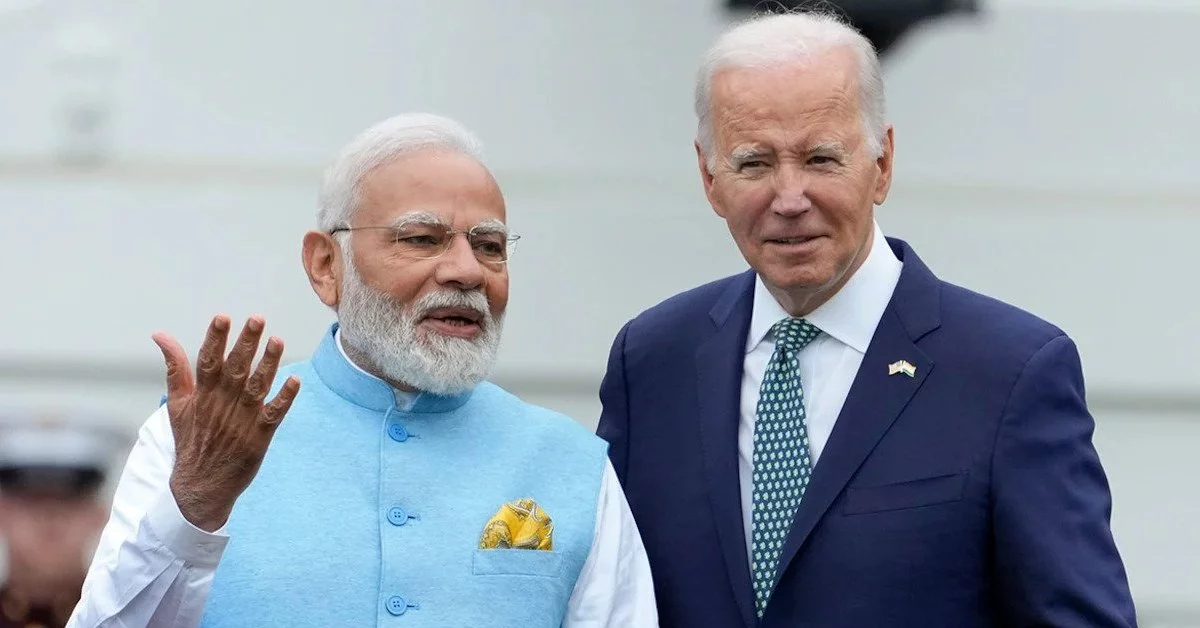Narendra Modi, the current Prime Minister of India, is a figure of both admiration and controversy. Born into a family of modest means, Modi has risen to prominence through his political acumen and his promotion of yoga as a means of influence. As he embarks on a four-day visit to the United States, his trip will include meetings with business leaders, a speech at the United Nations on international yoga day, a state visit to the White House, and discussions with President Joe Biden. However, his journey to power has not been without its share of criticism and controversy.
Modi‘s story begins in Vadnagar, a town in western India, where he was raised by his parents who sold cooking oil and ran a tea shop. Despite the financial challenges, his family lived in a small single-story house, measuring only 40 feet by 12 feet. Even in his youth, Modi showed a passion for reading and swimming, laying the foundation for his future endeavors.
After completing his studies in political science, Modi joined the Rashtriya Swayamsevak Sangh (RSS), a right-wing Hindu nationalist organization that seeks to preserve Hindu religion and culture. The RSS, often associated with the idea of Hindu supremacy, has been criticized for its role in promoting divisive ideologies and blaming India’s Muslim minority for societal problems. Recognizing Modi’s organizational skills, the RSS encouraged him to join the Bharatiya Janata Party (BJP), a political party that shares the RSS’s nationalist agenda.
Modi’s political career took off when he became the Chief Minister of the state of Gujarat in 2001. However, his tenure as Chief Minister would forever be marked by the Gujarat riots of 2002. The riots were triggered by a train fire that claimed the lives of Hindu pilgrims, leading to widespread communal violence. Hindu nationalists, allegedly supported by some within Modi’s administration, went on a rampage, targeting Muslims and resulting in the deaths of over 1,000 people, primarily Muslims. The incident raised serious questions about Modi’s leadership and his commitment to religious tolerance and human rights.
In the aftermath of the Gujarat riots, Modi faced international scrutiny, particularly from the United States. In 2005, the U.S. government denied him a visa, citing allegations of his involvement in the violence. The ban on his entry into the U.S. remained in place until he became the Prime Minister of India in 2014. Despite the controversy, India’s Supreme Court cleared Modi of complicity in the riots, but the events of 2002 continue to cast a shadow over his political career.
Since assuming office, Modi has pursued an agenda that has drawn both praise and criticism. Supporters credit him with implementing economic reforms, such as the Goods and Services Tax (GST) and demonetization, which aimed to curb corruption and boost the country’s economy. Additionally, Modi has positioned India as a global player, fostering closer ties with world leaders and seeking to enhance India’s influence on the international stage.
However, critics argue that Modi’s tenure has been marked by a growing intolerance and erosion of democratic values in India. They accuse him of cracking down on media dissent, stifling freedom of expression, and fostering a personality cult around his leadership. Moreover, there are concerns about his government’s treatment of religious and ethnic minorities, particularly Muslims. Critics claim that his administration has pursued policies that discriminate against minority groups and have led to social divisions within Indian society.
Modi’s promotion of yoga has been a significant part of his public persona. He has been instrumental in establishing International Yoga Day, which is now observed annually on June 21st. This event, which Modi persuaded the United Nations to adopt, serves as a platform for him to project an image of peace, strength, and unity. However, some argue that while Modi promotes yoga as a symbol of harmony, his government’s actions contradict this message, as they continue to implement policies that harm marginalized communities.
As Modi visits the United States, there is anticipation surrounding his interactions with President Joe Biden and other world leaders. The U.S.-India relationship has been a key focus for both countries, driven by shared interests in countering China’s influence and expanding economic cooperation. While some experts argue that the U.S. should prioritize human rights concerns in its relations with India, others believe that strategic considerations may outweigh these concerns, especially in light of the growing challenges posed by China’s rise.
Indian American voters have historically supported the Democratic Party in U.S. presidential elections. However, there is evidence that Hindu nationalist lobby groups have made inroads in Washington, influencing the perception of Modi and dampening criticism of his administration. This was particularly evident during the “Howdy, Modi” event in 2019, where Modi and former President Donald Trump shared a stage, signaling a close rapport between the two leaders.
As Modi’s visit to the United States unfolds, it is clear that his journey from a tea seller’s son to the Prime Minister of India has been both remarkable and controversial. While his supporters view him as a visionary leader who has brought economic progress and enhanced India’s global standing, critics raise concerns about his approach to governance, his handling of social divisions, and the treatment of religious and ethnic minorities. As Modi engages with world leaders and addresses various forums, the spotlight remains on him, his leadership, and the direction he is steering India in the 21st century.

